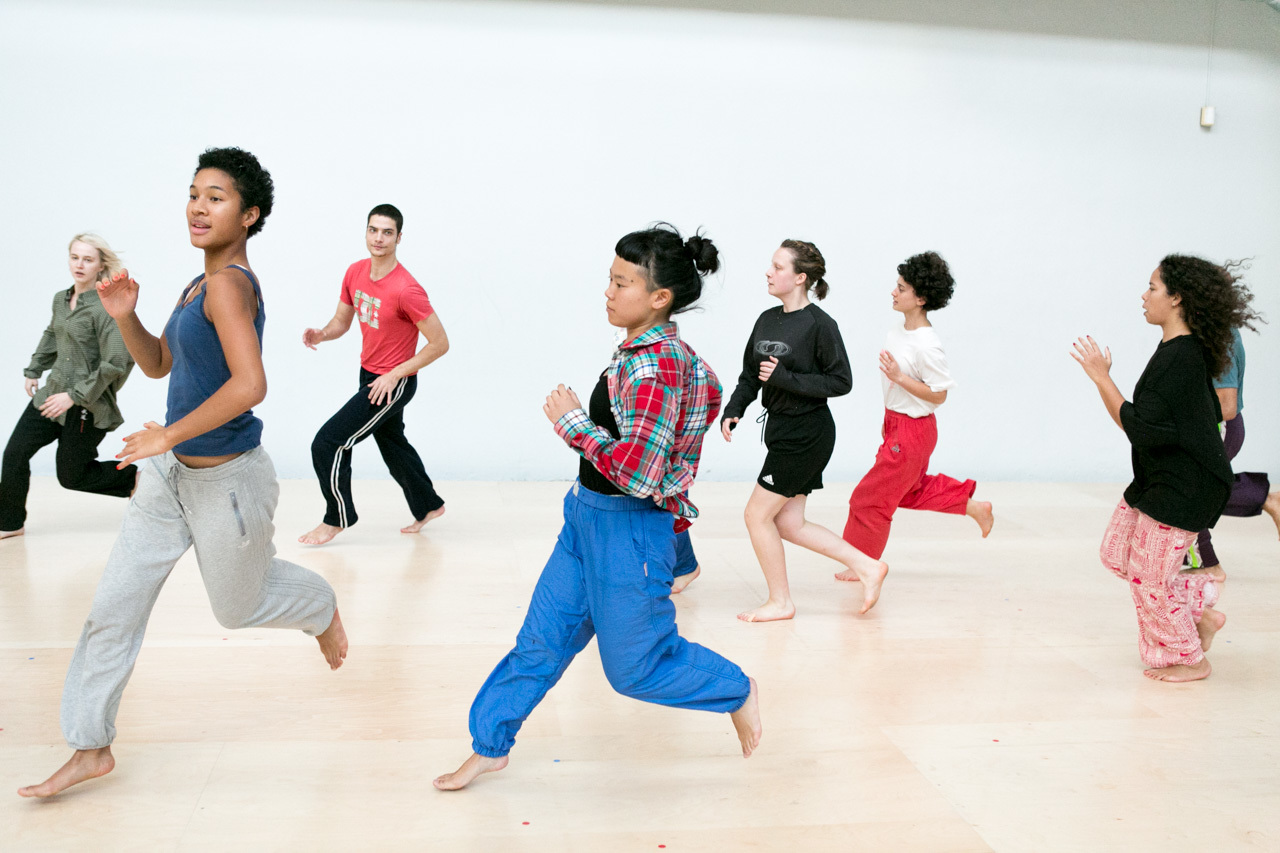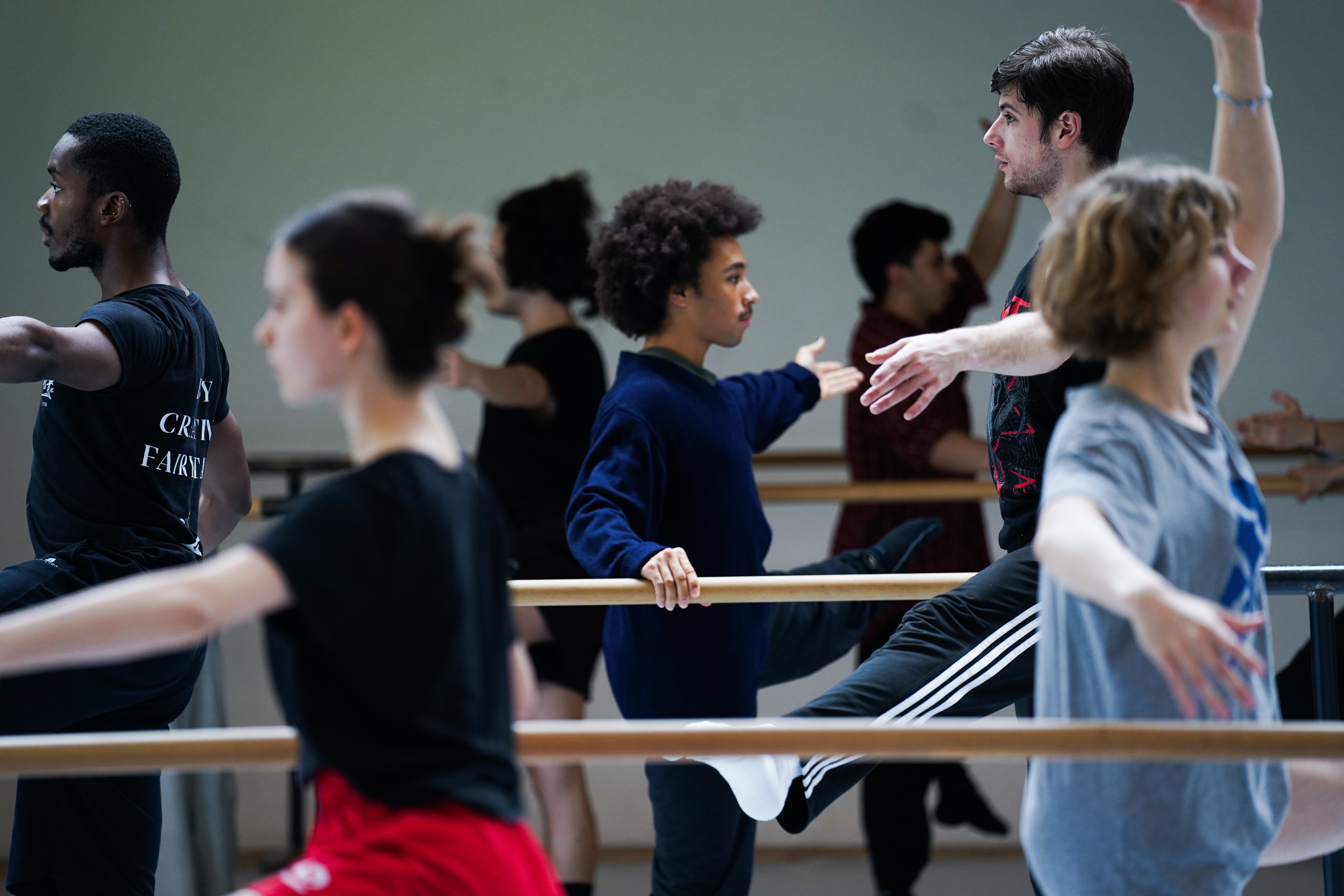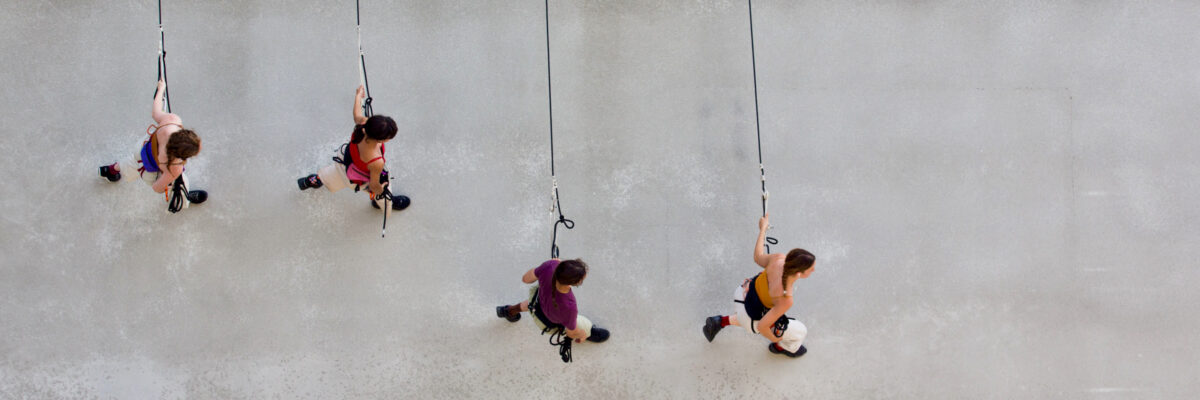Overview courses:
Dance Technique I (1st year) - 17 ECTS
Dance technique II (2nd year) - 14 ECTS
Dance Technique III (3rd year) - 13 ECTS
CONTEMPORARY
In the daily contemporary classes, the student builds up knowledge of movement principles, learns to integrate them into dynamic combinations and to apply them in set phrases or repertory fragments. Specific classes are focusing on floorwork, improvisation, partnering and contact improvisation. The student learns to know their body and its way of functioning, and to use it in a respectful, efficient and personal way. During the technique classes, a basis is developed for open experiment, releasing patterns and trusting the unknown.
Many technique classes focus on ‘release based technique’, which does not represent a formal ‘school’ but rather a set of very individual practices which have a number of premises in common: an analytical approach to the body, working on the conscience of individual movement patterns, and shifting patterns which do not serve the efficient use of the body.
Because release technique is not bound to a coded or copyrighted technique, or to a specific set of aesthetics, the individual experience and direction of the teacher becomes very important, resulting in the strong diversity inside the program. Some teachers also bring approaches that come from very different sources, both Western and non-Western.
A specific subset of classes is called ‘Studio Practice & Documentation’ or ‘individual practice’ and focuses on giving the students tools for analysing, devising and sustaining their own artistic practice as dancers and performers.
In the 3rd year, the contemporary dance classes are more linked to the idea of personal, artistic and dance technical research. The teachers develop explicit links between technique and creativity, between physical exploration and thinking: improvisation, movement scores, composition, performativity, bodywork. Teaching technique is a way to help students find and refine their own approach to ‘technique’, which they will have to continue doing during their professional career – and usually all by themselves.
Many classes in the 3rd year become 3-hours classes where a wider range of approaches is included.

BALLET
The classical technique presents a clear and functional architecture for the body. The classes focus on the form and functionality of classical ballet, and disregard its stylistic and hierarchical aspects. This open approach, focused on the functionality of movement, makes ballet appropriate for a wider range of body types. The stress on functionality, mechanics and organic movement also make a strong connection to the release approach in the contemporary classes.
The classes focus on developing a correct basic position, endurance and speed, coordination, musicality, differentiation of movement qualities, transitions between diverse movements, and the use of weight.

INDEPENDENT TECHNICAL WORK
ITW is reserved for the 3rd year. It’s an optional choice as part of the morning program, usually as an option against the ballet class that takes place at the same time. Students can use this time to process the information from different technique classes at their own pace, and to develop a personal practice which would be helpful for them in the professional context.

